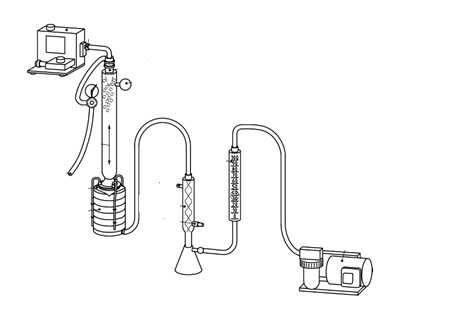Volume 14, Issue 2 (6-2024)
J Health Saf Work 2024, 14(2): 230-243 |
Back to browse issues page
Download citation:
BibTeX | RIS | EndNote | Medlars | ProCite | Reference Manager | RefWorks
Send citation to:



BibTeX | RIS | EndNote | Medlars | ProCite | Reference Manager | RefWorks
Send citation to:
Kalantary S, Pourmand M R, Masoorian E, Seyd Someah M, Barkhordarian Z, Hajinejad S et al . Evaluation of Bacterial and Particle Filtration of Medical Masks. J Health Saf Work 2024; 14 (2) :230-243
URL: http://jhsw.tums.ac.ir/article-1-6982-en.html
URL: http://jhsw.tums.ac.ir/article-1-6982-en.html
Saba Kalantary * 
 1, Mohammad Reza Pourmand2
1, Mohammad Reza Pourmand2 
 , Ensieh Masoorian2
, Ensieh Masoorian2 
 , Mirghani Seyd Someah1
, Mirghani Seyd Someah1 
 , Zahra Barkhordarian1
, Zahra Barkhordarian1 
 , Sara Hajinejad1
, Sara Hajinejad1 
 , Farideh Golbabaei1
, Farideh Golbabaei1 


 1, Mohammad Reza Pourmand2
1, Mohammad Reza Pourmand2 
 , Ensieh Masoorian2
, Ensieh Masoorian2 
 , Mirghani Seyd Someah1
, Mirghani Seyd Someah1 
 , Zahra Barkhordarian1
, Zahra Barkhordarian1 
 , Sara Hajinejad1
, Sara Hajinejad1 
 , Farideh Golbabaei1
, Farideh Golbabaei1 

1- Department of Occupational Health Engineering, School of Public Health, Tehran University of Medical Sciences, Tehran, Iran
2- Department of Pathobiology, School of Public Health, Tehran University of Medical Sciences, Tehran, Iran
2- Department of Pathobiology, School of Public Health, Tehran University of Medical Sciences, Tehran, Iran
Abstract: (433 Views)
Introduction: Protection of the respiratory system has been a vital, and for this purpose, various solutions have been proposed, including the use of masks. One of the most important parameters to measure the effectiveness of the mask against the penetration of microbial agents. The present study was conducted with the aim of evaluating the bacterial and particle filtration of medical masks.
Material and Methods: To assess bacterial performance, the national standard 6138, compliant with EN14683, and Type I medical masks were utilized. Staphylococcus aureus bacterial suspension was prepared and passed through the mask using a nebulizer and through an impactor with a flow rate of 28.3 l/min. Plates containing soy agar were placed in the impactor. Subsequently, all plates were incubated, and the bacterial filtration efficiency (BFE) of the masks was determined by counting the bacterial colonies that passed through the mask’s media as a percentage of the total bacteria. It is worth noting that the pressure drop and particle filtration efficiency were also determined for all masks
Results: Based on the results of the particle removal performance for the particle size of 3 µ, the masks were categorized into three groups with efficiency above 99%, above 95% and 90%. According to the standard, all masks had an acceptable pressure drop below 40 Pa. The acceptable bacterial filtration rate for type I masks should be above 95%. The results showed that type A and B masks have an acceptable bacterial filtration rate and there is a significant correlation between the types of masks examined in terms of bacterial and particle efficiency.
Conclusion: The results showed that different types of masks under investigation have significant differences in terms of particle capture efficiency and bacterial filtration performance. In addition, there is a significant correlation between bacterial and particle filtration efficiency.
Material and Methods: To assess bacterial performance, the national standard 6138, compliant with EN14683, and Type I medical masks were utilized. Staphylococcus aureus bacterial suspension was prepared and passed through the mask using a nebulizer and through an impactor with a flow rate of 28.3 l/min. Plates containing soy agar were placed in the impactor. Subsequently, all plates were incubated, and the bacterial filtration efficiency (BFE) of the masks was determined by counting the bacterial colonies that passed through the mask’s media as a percentage of the total bacteria. It is worth noting that the pressure drop and particle filtration efficiency were also determined for all masks
Results: Based on the results of the particle removal performance for the particle size of 3 µ, the masks were categorized into three groups with efficiency above 99%, above 95% and 90%. According to the standard, all masks had an acceptable pressure drop below 40 Pa. The acceptable bacterial filtration rate for type I masks should be above 95%. The results showed that type A and B masks have an acceptable bacterial filtration rate and there is a significant correlation between the types of masks examined in terms of bacterial and particle efficiency.
Conclusion: The results showed that different types of masks under investigation have significant differences in terms of particle capture efficiency and bacterial filtration performance. In addition, there is a significant correlation between bacterial and particle filtration efficiency.
Type of Study: Research |
Received: 2024/07/2 | Accepted: 2024/06/30 | Published: 2024/06/30
Received: 2024/07/2 | Accepted: 2024/06/30 | Published: 2024/06/30
| Rights and permissions | |
 |
This work is licensed under a Creative Commons Attribution-NonCommercial 4.0 International License. |




